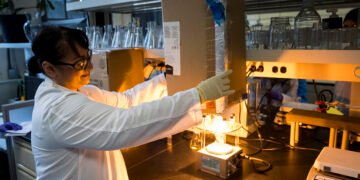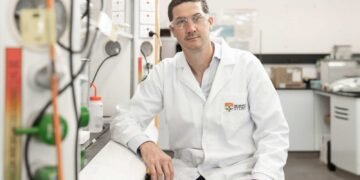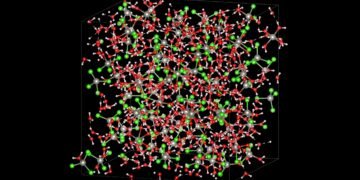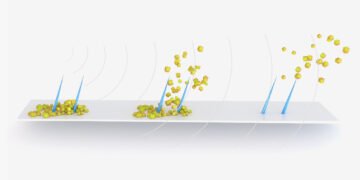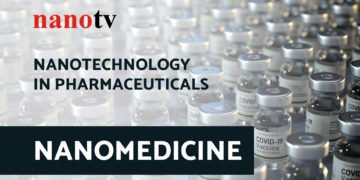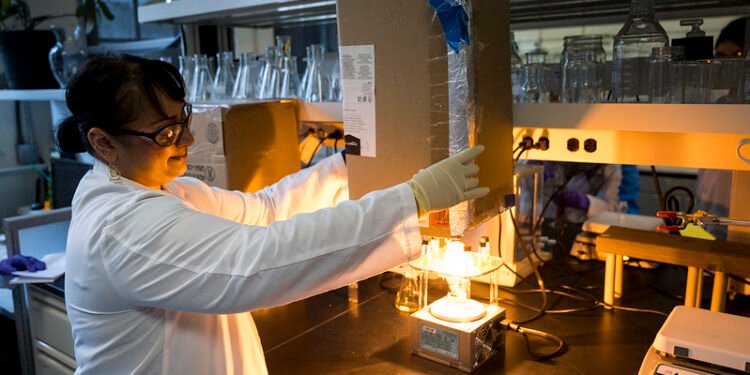Using light to tune silver nanoparticles opens door to better imaging and much more
By Steve Lundeberg
Researchers have discovered a way to use ultraviolet rays to precisely adjust the size and shape of silver nanoparticles, tiny but hugely important bits of matter for applications including electronics, environmental monitoring and medical imaging.
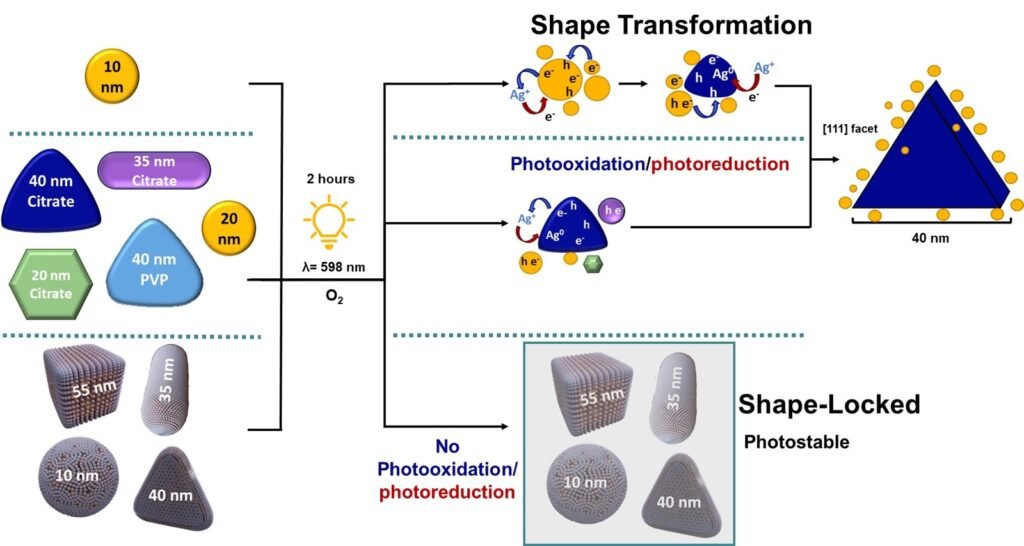
In addition, the scientists found a technique for making the silver nanoparticles, whose specific properties depend on how big they are and what form they take, stable in the presence of light and oxygen, helping to ensure consistent performance over time.
“This breakthrough could truly revolutionize the field,” said Oregon State University materials scientist Marilyn Rampersad Mackiewicz, who led the study.
Nanoparticles are pieces of material ranging in size from one- to 100-billionths of a meter. Silver nanoparticles are incorporated into products including sanitizers, odor-resistant clothes, washing machines, makeup, food packaging and sports equipment. They are able to kill microorganisms and are industrially important as catalysts.
The research by Mackiewicz, associate professor of chemistry in the OSU College of Science, sought to overcome a pair of enduring challenges in the silver nanoparticle field: How to easily make them in uniform shapes and sizes, and how to keep them from degrading.
“Having silver nanoparticles of the same shape and size ensures they work effectively and reliably, making them more useful and efficient,” Mackiewicz said. “And the longer they can maintain that size and shape, the more valuable they are.”
When silver nanoparticles are uniform, they display consistent physical and chemical properties, including optical, electrical and catalytic behaviors. Uniformity is vital to applications that rely on precise interactions at the nanoscale, including the nanoparticles’ use:
- In wound dressings, coatings for medical devices and drug delivery systems.
- As conductive inks and other components of printed electronics.
- In water purification systems as a means of removing harmful microorganisms.
- In sensors and imaging devices used in medical diagnostics and environmental monitoring.
In this study, Mackiewicz, research assistant Citlali Nieves Lira and doctoral student Hao Yue uncovered a comparatively quick and simple way to use ultraviolet light, coupled with oxygen and positively charged silver ions, to convert different shapes of nanoparticles into triangular ones of identical size.
They also learned that covering the nanoparticles with a hybrid lipid-coated membrane made them exceptionally stable, resistant to further change even in the presence of light and oxygen. Photooxidation is a common problem in nanoparticle applications.
“Our study provides a deeper understanding of the roles that light, silver ions and oxygen play in the shape transformation process for silver nanoparticles,” Mackiewicz said. “What we learned will aid in the design of better synthesis methods, improve the performance of silver nanoparticles and ultimately make the world both safer and more efficient.”
Source: Oregon State University
